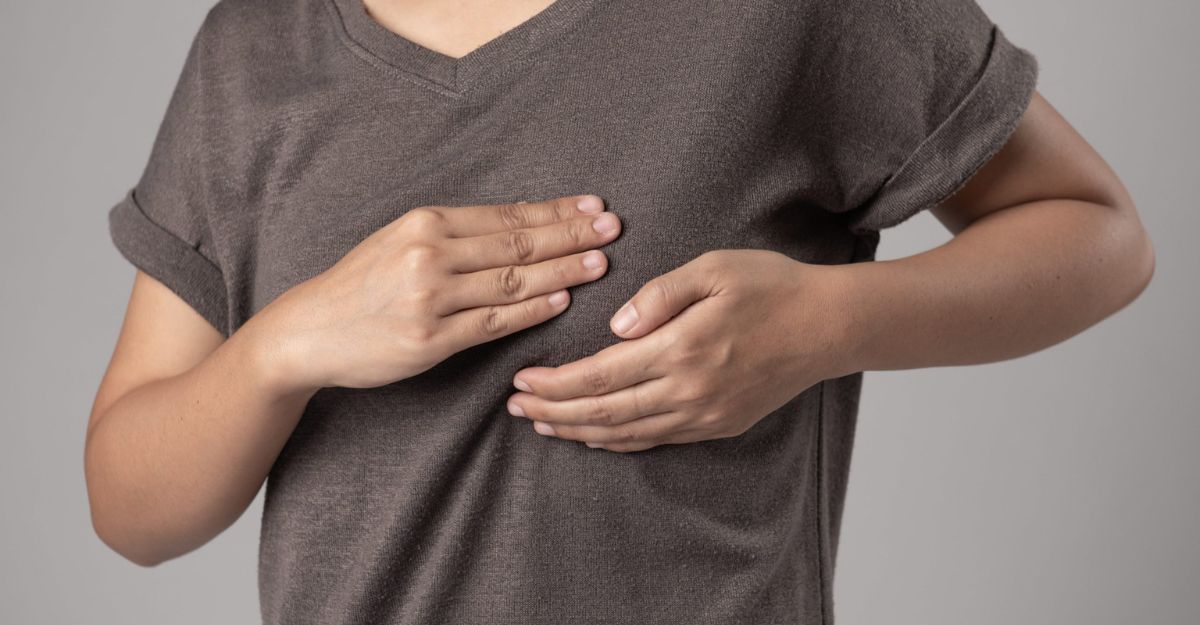

Although breast lumps are more commonly found in women, breast tissue is present in men and women and hence lumps can form in men as well. Hormones affect the breast tissue. Changes in these breast tissues can cause the formation of lumps or, in some cases, make them naturally disappear.
Breast lumps refer to the overgrowth of tissues developing inside your breasts. There are many types of breast lumps, and each type may look and feel different.
Upon touching your breasts, you might notice:
In some cases, babies develop breast lumps because of the estrogen they get from their mothers during their development. But the lumps usually clear up once the estrogen leaves their bodies. Sometimes, prepubescent girls get breast lumps too. Usually, these are tender and often go away on their own during puberty.
In most cases, breast lumps are benign, i.e., noncancerous. However, in some cases, breast lumps can be a sign of cancer as well.
The possible causes of breast lumps include:
Fibrocystic breast changes occur due to hormonal changes during menstruation. You may develop breast lumps that increase in tenderness and size a few days before your menstrual cycle. You may also experience slight nipple discharge.
These breast lumps are milk ducts and tissues around them that grow to form cysts. The hormones released around your menstrual cycle make the cysts grow in size.
More often, fibrocystic changes are seen in women in their 40s. However, postmenopausal women are at a lower risk of going through these changes in their breasts.
Fibroadenomas are the most common type of benign breast lumps. Upon touch, they feel like round, solid, and rubbery lumps that feel very mobile inside the breast. Usually, these lumps are painless.
More often, fibroadenomas are found in women between the age group of 20 and 30 years.
Simple cysts are tiny sacs filled with fluid. Usually, these cysts affect both the breasts. They differ in size and number. The size and tenderness of the cysts usually change with your menstrual cycle.
It usually happens during an injury to the breast. In most cases, you may not even remember the injury. The injury causes lump formation in your breasts. These lumps are usually made up of fat and are round, painless, and firm.
Intraductal papillomas develop in the lining of the mammary ducts near your nipple. More often, intraductal papillomas affect women between the age groups of 30 and 50 years. In some cases, these can even cause bleeding from the nipples.
Although most breast lumps are benign, you should consult your doctor if you notice the following symptoms:
For a confirmed diagnosis of breast lumps, the doctor will ask you questions about when you felt the lump or whether you have been experiencing other symptoms. He/She may also perform a physical examination of your breasts.
Depending on what the doctor finds during the physical examination, he/she may perform additional tests.
An ultrasound uses sound waves to produce images of your breasts.
An MRI will create detailed images of your breasts using magnetic and radio waves. It will help diagnose lumps or any other abnormalities in your breasts.
A type of X-ray, the mammogram, will help identify breast abnormalities. For a confirmed diagnosis and to check how the breast tissues might have changed, the doctor may do a diagnostic mammogram and compare it with previous screening mammograms.
During this procedure, the doctor will use a needle to remove fluid from the breast lumps. The doctor may use an ultrasound to help guide the needle.
If it is a noncancerous cyst, it may resolve when the doctor removes the fluid. But if the fluid seems cloudy or bloody, the doctor will send the sample to the laboratory for further tests and analysis.
To do the biopsy, the doctor will take a small sample of the breast tissue to analyze it under a microscope.
Depending on the cause and severity of your breast lumps, the doctor will devise a treatment plan for you.
If the lumps turn out to be breast cancer, the doctor may prescribe the following treatment methods:
In most cases, breast lumps turn out to be benign, which suggests that you may not need any medical treatment. More often, benign breast lumps resolve on their own. If you develop breast lumps due to an injury, the doctor may recommend you let your breasts heal on their own. However, if you notice any changes in your breasts and the area around them, consult with your doctor.
On average, about 20 percent of the breast lumps cases turn out to be cancerous.
Pain in the breasts, with or without redness on the skin, may indicate an infection. The most common type of breast infection in breastfeeding women is Mastitis. It occurs when the bacteria get into the mammary ducts through the nipples. To help the infection resolve, the doctor may prescribe antibiotics.
Cancerous breast lumps may feel round, tender, and soft to the touch. These lumps develop in any region of your breasts. In some cases, the lumps may even cause pain.
Some women have dense, fibrous breast tissue. For these women, lumps or any other changes in the breast tissue may cause more pain.
In the majority of breast cancer cases, each cell division takes about one or two months. By the time you can feel the lump in your breasts, cancer will have been in your body for anywhere between two to five years. Hence it is best to go for regular screening of the breasts every year after the age of 40.
The content is verified by our experienced Gynecologists who also regularly review the content to help ensure that the information you receive is accurate, evidence based and reliable
